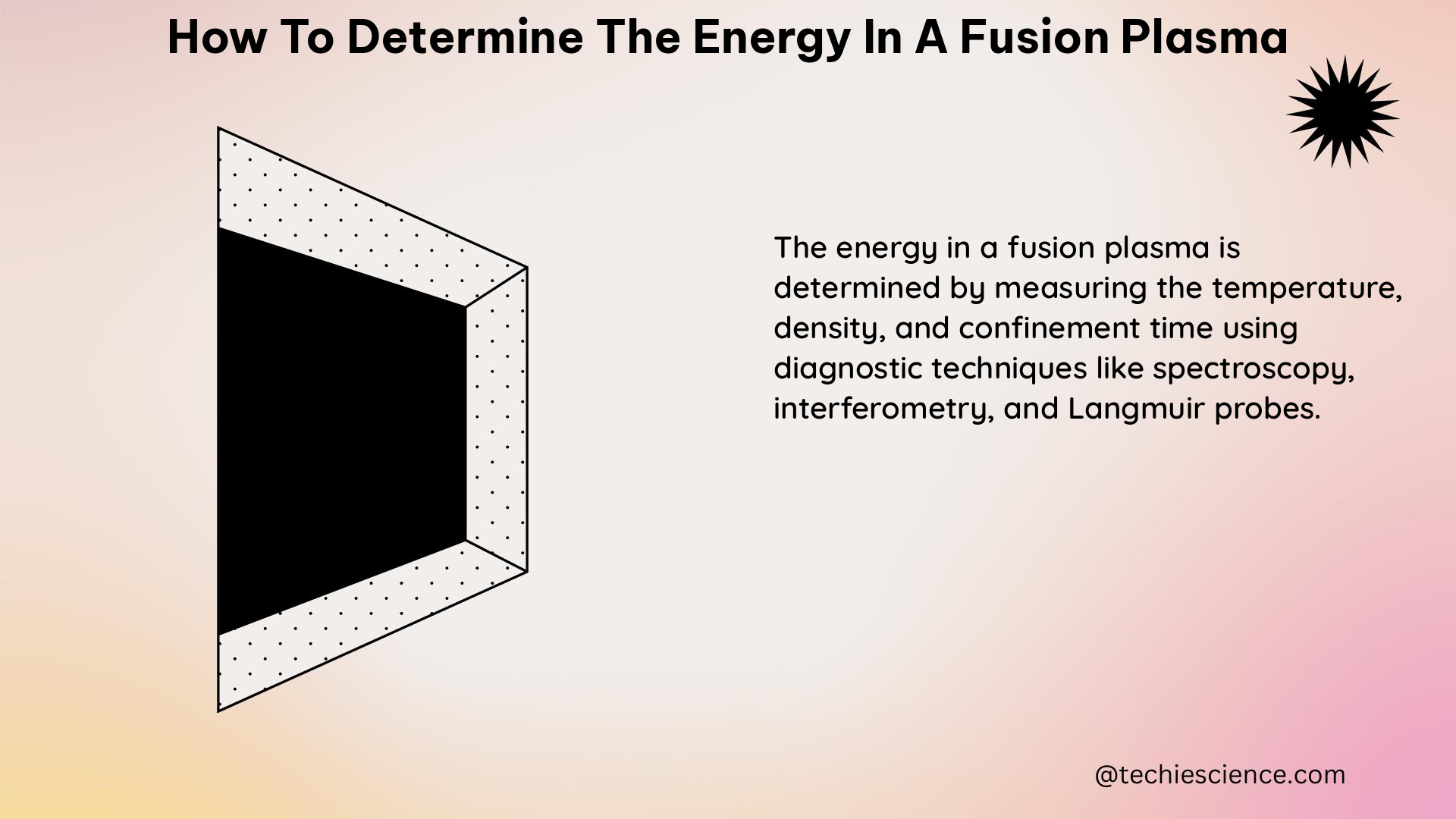Summary
To determine the energy in a fusion plasma, the most important quantity to consider is the fusion triple product, which is the product of three attributes of a fusion plasma: the density of ions (n), the temperature of those ions (T), and the energy confinement time (τ). The fusion power plant running on deuterium and tritium (D-T) fuel will have a triple product of about 5×10^21 m^-3 keV s or greater. This triple product is independent of the particular scheme used to create the fusion plasma, making it a valuable metric for comparing performance across different fusion approaches.
Understanding the Fusion Triple Product

The fusion triple product, denoted as n·T·τ, is a dimensionless quantity that serves as a key indicator of the performance of a fusion plasma. This product represents the three critical factors that determine the rate of fusion reactions:
- Plasma Density (n): The higher the density of ions in the plasma, the more likely they are to collide and undergo fusion reactions.
- Plasma Temperature (T): The higher the temperature of the ions, the more kinetic energy they possess, which increases the probability of overcoming the Coulomb barrier and fusing.
- Energy Confinement Time (τ): The longer the plasma can be confined and maintained at high temperature, the more time the ions have to undergo fusion reactions.
The fusion triple product is a meaningful quantity in various fusion schemes, including:
- Magnetic Confinement Fusion (MCF): Tokamaks and stellarators use strong magnetic fields to confine and control the hot plasma.
- Inertial Confinement Fusion (ICF): Laser fusion and other inertial confinement approaches rely on the inertia of the fuel to achieve high densities and temperatures.
- Magneto-Inertial Fusion (MIF): Hybrid approaches, such as MagLIF and compressed field-reversed configurations (FRCs), combine aspects of both magnetic and inertial confinement.
Fusion Triple Product Trends
The maximum triple product achieved by fusion energy experiments has grown dramatically over the decades, as shown in the figure below:

This graph illustrates the remarkable progress made in fusion research, with the triple product increasing by several orders of magnitude from the 1950s to the early 2000s. However, since then, the focus in fusion research has shifted primarily to the ITER project.
The ITER Experiment
ITER, which will be the world’s largest tokamak when completed, is designed to generate ten times more fusion power than the heating power injected into the plasma. ITER is expected to reach this goal between 2035 and 2040 at a cost of over $25 billion.
ITER is a critically important scientific experiment for several reasons:
- Understanding Plasma Physics: ITER will provide a platform to study the physics of plasmas that generate significantly more fusion power than they consume, which is a crucial step towards realizing practical fusion power.
- Technology Development: ITER will serve as a testbed for the development of key technologies needed to handle plasmas at the extreme conditions required for fusion.
- Fusion Triple Product: ITER is designed to achieve a fusion triple product of around 5×10^21 m^-3 keV s, which is a significant milestone in the quest for practical fusion power.
The Fusion Reaction and Energy Potential
In ITER, fusion will be achieved in a tokamak device that uses magnetic fields to contain and control the hot plasma. The plasma particles are heated, or sped up, by various auxiliary heating methods. The fusion between deuterium and tritium (D-T) nuclei produces one helium nucleus, one neutron, and a large amount of energy.
This energy will be captured by cooling water circulating in the vessel walls and eventually dispersed through cooling towers. In the type of fusion power plant envisaged for the second half of this century, the heat will be used to produce steam and, through turbines and alternators, generate electricity.
The energy potential of the fusion reaction is superior to all other energy sources known on Earth. Fusing atoms together in a controlled way releases nearly four million times more energy than a chemical reaction, such as burning oil or gas, and four times more than nuclear fission.
Conclusion
Determining the energy in a fusion plasma is a critical step in the development of practical fusion power. The fusion triple product, which combines the plasma density, temperature, and confinement time, is the key metric used to measure and compare the performance of different fusion experiments and concepts. The ITER project, as the world’s largest tokamak, is a crucial step towards understanding the physics of high-performance fusion plasmas and advancing the technologies needed to harness the immense energy potential of fusion reactions.
References
- Measuring Progress in Fusion Energy: The Triple Product, Sam Wurzel, 2019-12-19
- Capturing the energy – ITER.org
- ATOMIC AND PLASMA-MATERIAL INTERACTION DATA FOR FUSION, VOLUME 1, IAEA, VIENNA, 1991

The lambdageeks.com Core SME Team is a group of experienced subject matter experts from diverse scientific and technical fields including Physics, Chemistry, Technology,Electronics & Electrical Engineering, Automotive, Mechanical Engineering. Our team collaborates to create high-quality, well-researched articles on a wide range of science and technology topics for the lambdageeks.com website.
All Our Senior SME are having more than 7 Years of experience in the respective fields . They are either Working Industry Professionals or assocaited With different Universities. Refer Our Authors Page to get to know About our Core SMEs.